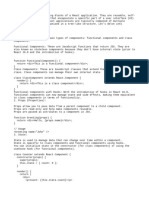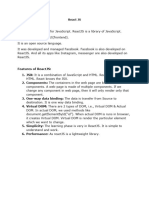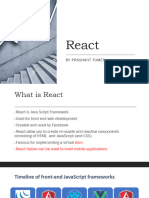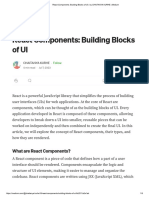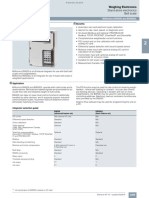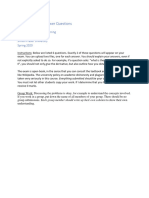0% found this document useful (0 votes)
42 views3 pagesComponents
helped in React Native course in Coursera
Uploaded by
Ankit KarmakarCopyright
© © All Rights Reserved
We take content rights seriously. If you suspect this is your content, claim it here.
Available Formats
Download as PDF, TXT or read online on Scribd
0% found this document useful (0 votes)
42 views3 pagesComponents
helped in React Native course in Coursera
Uploaded by
Ankit KarmakarCopyright
© © All Rights Reserved
We take content rights seriously. If you suspect this is your content, claim it here.
Available Formats
Download as PDF, TXT or read online on Scribd
/ 3




